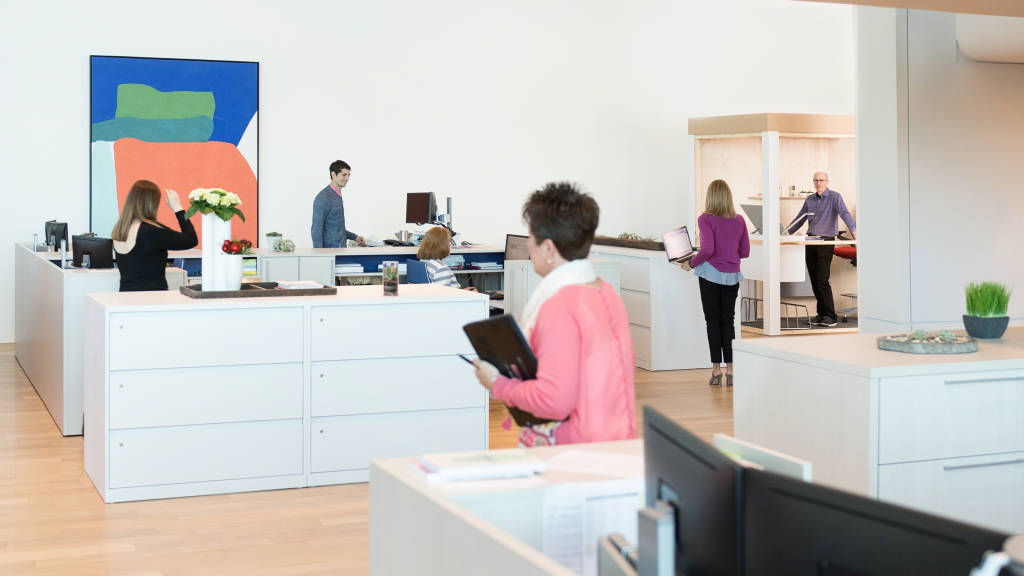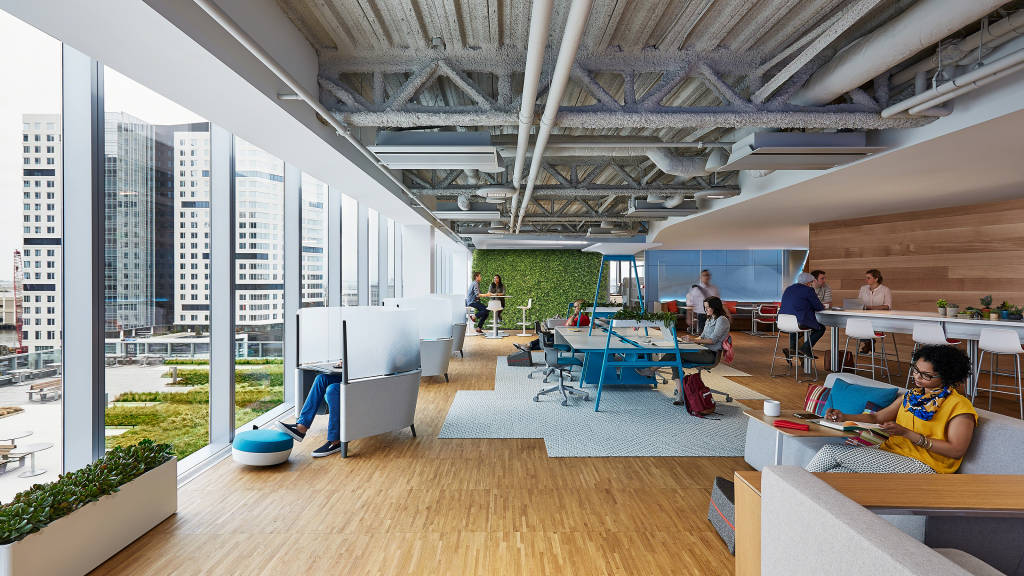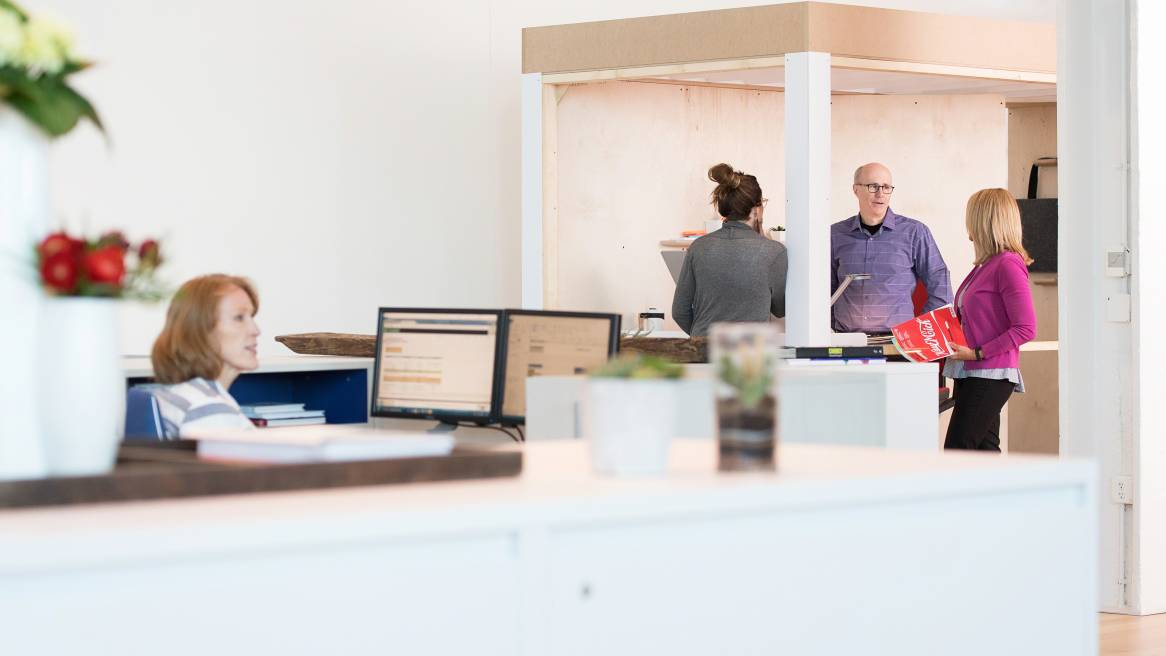Privacy + Openness: It’s About Balance
A recent Wall Street Journal article showcased the tension for executives between the desire for openness and transparency and the need for privacy. Executives, including former Steelcase CEO Jim Keane, are seeking to promote creativity and collaboration while still finding ways to focus and seek respite during parts of the day. These needs are shaping new ways of working and new kinds of leadership spaces. But, the conversation doesn’t stop there. The article sparked dozens of comments, some people asking why only leaders should be afforded the opportunity to get away from the distractions of the open plan?
Steelcase research suggests that while executives do face unique challenges at work, their needs have parallels to those of many people within their organization. Two separate research projects on leaders and employee engagement offer valuable learnings about how best to support people at all levels within an organization.
The New Leader
The ramifications of leaders’ actions and their need to immerse deeply in a wide range of topics puts extreme pressure on executives to make every moment count. After years of interviews and observations, Steelcase researchers identified three drivers causing leaders to work in new ways.
- “Infobesity” – Leaders dealing with an onslaught of information have to quickly decide what’s of value. They need to rely on networks of people to know what they cannot, all while keeping sensitive information confidential and remaining accessible.
- Rapid Context Shifting – The pace of work has accelerated. Schedules are jammed and more fragmented due to multiple time zones at play. When moving from finance to human resources to marketing, leaders require a mental reset for each new meeting.
- Always “On” – Leaders need to manage large numbers of internal and external relationships spanning organizational and geographic boundaries. This requires an ongoing juggling act and amplifies the degree of mobility required.

The new Steelcase Leadership Community acts as a behavioral prototype designed to address the key challenges leaders are facing. Instead of providing leaders with a private office, the Leadership Community provides leaders with an ecosystem of spaces from which to choose, depending on what kind of work they need to do.
Keane’s space has evolved over time. His current personal space is a small pod still in the prototype stage. He uses it when he needs to mentally switch contexts between meetings or do heads-down focus work. It’s on the first floor of the Learning and Innovation Center where he also has access to large and small meetings rooms and can interact with customers and employees on the floor.
Employee Engagement
Where leaders work isn’t the only part of the office that’s evolving. People at all levels of the organization are seeking workplaces that allow them to choose where and how they can get their best work done, including places for privacy and focus. The Steelcase Global Report: Engagement and the Global Workplace surveyed more than 12,000 employees in 20 countries. It found that more than one-third of workers are disengaged and the most engaged employees were those who were also the most satisfied with their work environment. For those described as highly disengaged employees:
- Only 14 percent can choose where to work in the office based on the task (88 percent of highly engaged people said the same)
- Only 15 percent can concentrate easily (98 percent of highly engaged people said the same)
- Only 13 percent can work in teams without being interrupted (94 percent of highly engaged people said the same)
Additional research has bolstered the findings that the workplace can make a difference in engagement. Gallup’s State of the American Workplace reports 75 percent of people experience frequent noise while working and 42 percent would change jobs to have privacy when they need it.
42 percent would change jobs to have privacy when they need it.
Gallup
Choice + Control

In order to solve complex problems and generate new ideas, people have to come together. But throughout the world too much interaction and not enough privacy is taking a toll on worker’s creativity, engagement and wellbeing. Too many workplaces today don’t recognize privacy as a necessity.
Designing for Privacy
Learn methods designers can use to give workers the privacy they crave.
Listen to 360 Real Time podcasts on iTunes or SoundCloud.
But, private offices aren’t the solution, and open-plan offices aren’t the problem. Rather, it’s about balance. Creating an ecosystem of spaces, including some that support private moments and others that support collaboration, is critical to promote employee creativity, engagement, wellbeing and, ultimately, drive innovation.
In the workplace, an ecosystem of spaces can work together like an ecosystem in nature to support different kinds of behaviors throughout the day. Do they need to collaborate or focus? Are they looking for a moment of respite or do they need to work shoulder-to-shoulder with a colleague?
While the Wall Street Journal article focused on leaders, Steelcase research tells us one size does not fit all. Whether it’s a private office on an upper floor, or an open-plan workstation, people are discovering that one type of work space is no longer enough. Choice and control is not only a significant component in building engagement; it has become the new status symbol for today’s workers.
Photos courtesy of David Chandler


